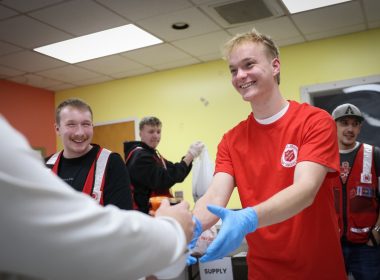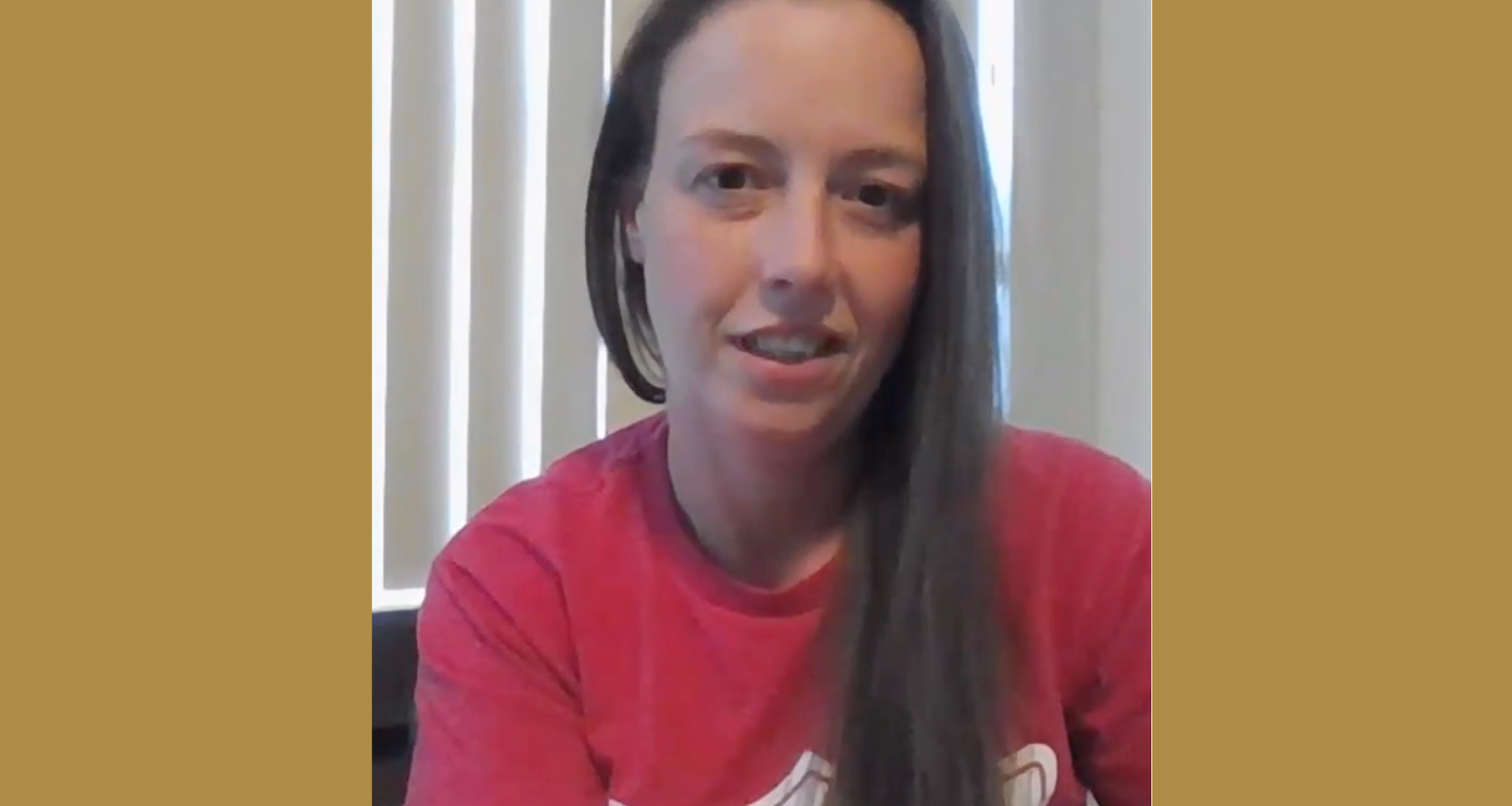Today we’re focusing on a topic that hits close to home for many families across the country: food insecurity.
With rising prices, the struggle to put food on the table has become a reality for more and more people in recent years.
The Urban Institute, a nonprofit research organization, reported in April that food insecurity increased for the second straight year in 2023.
That means some 10 percent of households here in the U.S. have limited or uncertain access to adequate food.
And many people are turning to charitable food resources to make ends meet.
That’s where organizations like The Salvation Army come in. In the western U.S. alone, The Salvation Army provided over 9 million meals last year—an increase of more than 6 percent from the previous year. The Salvation Army is also delivering more snacks and grocery orders to families who need them, and in some areas, is partnering with local schools to fight hunger.
In Yakima, Washington, for example, The Salvation Army has partnered with 16 local schools to provide food assistance.
What started with just one school now serves nearly 800 kids every month, providing much-needed snacks and backpacks of food to keep kids fed for the weekend.
Read more about this effort, how it’s delivered and the impact it has according to one of the principals involved.
See more: The Salvation Army partners with schools to fight food insecurity
But today, I want to back up and introduce you to one of the people making sure the food is ready.
Kandie Spaet is a volunteer who came to The Salvation Army through a community job placement program. For months, she worked 20 hours a week at the Yakima Corps helping pack backpacks and in the food pantry.
And now, she comes back to volunteer.
Show highlights include:
- Volunteering at the Salvation Army food bank and pantry can make a significant impact on the community.
- The food pantry provides a one-on-one shopping experience for individuals to choose their food items.
- The backpack program packs food for school representatives to send home with families.
- Volunteering is not as hard or boring as people may think, and it is a rewarding experience.
- Donations from local grocery stores and community members play a crucial role in supporting the food bank and pantry.
Listen and subscribe to the Do Gooders Podcast now. Below is a transcript of the episode, edited for readability. For more information on the people and ideas in the episode, see the links at the bottom of this post.
* * *
Kandie Spaet: I’m Kandie and I volunteer at The Salvation Army doing the food bank and the kindergarten backpacks.
Christin Thieme: So take me back, Kandie, to the first day you walked into The Salvation Army there in Yakima. How did that day go?
Kandie Spaet: It was interesting. My very first day was in the warehouse. The first day I did the food bank was crazy. It was really, really busy.
Mostly I just stock the food and I get to talk to all the people, which is really nice.
Christin Thieme: I understand you first came to The Salvation Army, into this role, through a community job placement program. Can you share a little bit about your story and what actually led you to the doors of The Salvation Army?
Kandie Spaet: I had a child and I went on maternity leave for a couple of years and then I had to get back in the working force and I went through DSHS. And they recommended People for People and then People for People found me The Salvation Army.
Christin Thieme: When did you first realize that you were directly involved in the effort to fight hunger in your community through your role there in the food pantry? When did that kind of first click for you?
Kandie Spaet: This lady came in and she had two kids that somebody just left with her and she just touched my heart so much coming through the food bank because she didn’t get very many food stamps. She didn’t have help from anywhere else and the food bank really mattered to her. It was awesome just to see how that works on the ground level.
Christin Thieme: Can you give us a little insight into when you say food bank, food pantry, what happens? What are you doing in there? What happens when somebody comes in?
Kandie Spaet: It’s kind of like a personal shopper thing. So we take one person. It’s a one-on-one and we walk them around the room. They get to pick what kind of canned food they like. And then we have bread and then we have refrigerated food. Then we freezer stuff and then noodle stuff and then they go out the door with huge boxes of food. A box would probably last like five to seven days if you, you you did it right. We get to talk to them and see how, like what their story is.
Christin Thieme: I bet that has been really neat to connect with people in your community who are coming in and meeting in this way. Is there a particular story that stands out to you when you knew like, yeah, this is really making an impact for somebody?
Kandie Spaet: That lady who had the two kids because she couldn’t claim them. So she couldn’t get money or food stamps for them. So it just it helped her so much. It just touched my heart.
Christin Thieme: How many families a week or a month on average, would you say come through?
Kandie Spaet: A day is probably anywhere from like 60 to 80 a day. And it’s different people because they can only come once a month. So it’s 80 people, 80 different people every day of the month. So that’s really, that’s a lot of families and all kinds of people come in, you know, they’re homeless people, people with tons of kids. And it’s just nice to see how much they’re thankful for. Even if it’s not a lot, it really helps.
Christin Thieme: You have not only helped in the food pantry, but also with packing backpacks of food for school representatives to send home with families directly from local schools. What kind of items are you packing in those food bags?
Kandie Spaet: Snacks, like, granola bars, fruit snacks. And then we try and pack a little bit of, like, dinner stuff, some noodles, spaghetti sauce, corn, vegetables, mashed potatoes, things like that. Things that are really easy that kids like.
Christin Thieme: From your vantage point in doing food assistance, how do you think that contributes to the broader mission of fighting food insecurity? That’s a big goal for The Salvation Army, to fight hunger. How do you think your role in particular there in the pantry and with the schools, how does that contribute to that broader mission?
Kandie Spaet: I feel like it’s on the ground level. It’s very personal, person to person. I get to go to the schools and I get to see all the kids running around. And it’s just really nice to work on the ground level.
Christin Thieme: And this isn’t your full-time work. You have real responsibilities. You have to balance your time and your resources and so on, like the majority of us. So what inspired you to come back and volunteer with The Salvation Army? Why is this work meaningful to you?
Kandie Spaet: It’s mostly because of the kids. Because so many kids go hungry and it’s just nice to see them eat. Like if they come through the food bank, we have little treats sometimes and it’s so nice just to give them like a cookie. To see the look on their face is totally worth it.
Christin Thieme: That’s so sweet. People sometimes have this view of volunteering is just this “small thing.” But what do you hope those so-called small acts are achieving in the larger context?
Kandie Spaet: I feel like that’s really where it starts. It’s a big deal. We don’t get very many volunteers. So for somebody to volunteer, it’s a big deal for all of us.
Christin Thieme: What did you think it would be like to volunteer versus what is it actually like? I mean, for somebody who maybe hasn’t volunteered before, they like the idea of it, but they’re a little nervous about it. What is it actually like to go in and volunteer?
Kandie Spaet: It’s really not as hard as most people would think or as boring as most people would think that it is. A lot of people think you go in there and you don’t really do anything, you know, desk work or something, but you go in and everybody’s nice and they show you how to do stuff. And if you don’t get it, then somebody hangs out with you until you do get it. It’s really easy.
You just go and sign up and like they call me now when they need me. So it’s really nice to just go when they need me to and volunteer my time. have a bunch of kids myself, so I know how much it really helps impact the community.
Christin Thieme: Yeah, makes a big difference. What has been the most surprising aspect of helping to you?
Kandie Spaet: How much food gets donated. It really was a lot. Like we have giant pallets of corn and vegetables and stuff comes in from Safeway and grocery stores. And when the bags for the schools go for donating dry goods, so much food comes in. So many people help.
It just makes me smile to know that these are real people in my community that are really helping them. It really matters.
If you want to volunteer and you’re shy or you’re nervous, just go in, just rip the bandaid and go get it done. Cause it really is worth it. We definitely need the help and it’s fun.
Christin Thieme: Why do you keep coming back?
Kandie Spaet: Because it matters. It really helps. It matters to a lot of people. I couldn’t imagine if we didn’t have a food bank. So many people would go hungry, and a lot of kids. It just impacts the community so much.
Additional resources:
- If you are one of the hopefuls, get on the list for the Do Good Digest, our free 3-minute weekly email newsletter used by more than 26,000 hopefuls like you for a quick pick-me-up in a busy day.
- If you are enjoying this show and want to support it, leave a rating and review wherever you listen to help new listeners hit play for the first time with more confidence.
- If you want to help The Salvation Army serve more than 24 million Americans in need each year, give today. Your gift of money, goods or time helps The Salvation Army do good all year in your community.
Listen and subscribe to the Do Gooders Podcast now.
GIVE TODAY
Meet hunger with hope
Right now, families are staring at empty pantries while grocery prices keep climbing. Your gift today puts food on bare shelves and hope back in kitchens across our community.












